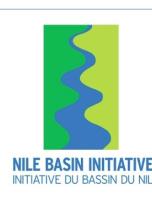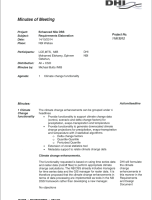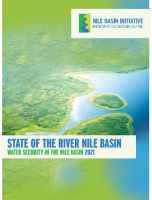Abstract
Report detailing the identification of system sensitivity to historic climate variability and historic coping strategies, resulting in the following findings: (1) natural variability in the hydrology of the Nile has been of interest to society for long time (at time scales of hundreds of years the variability of the hydrology of the Nile has been recorded as part of the history of the region and its people, while, at the other end of time scales, variability in the hydrology of the Nile at the time sales of months is quite predictable, with flooding during summer and low flow in winter); (2) although the inter-annual variability in the hydrology of the Nile has been considered random and unpredictable, recent research has shown that floods and droughts in the Nile basin are associated with the El Nino phenomenon and Indian Ocean weather patterns); (3) the RiverWare water resources model developed under the Eastern Nile Planning Model Project configured to simulate potential future conditions (the period from 2018 to 2052), assuming the 35 years of naturalized historical hydrologic data from 1956 to 1990, was used to test the resilience of the developed infrastructure (how the new dam will impact generation of power in Sudan (e.g Rosaries) , agriculture in Sudan, and the flow of water to Egypt); and (4) annual forecasts of hydrologic and climatic conditions in the Nile basin, in the form of the Eastern Nile Flood Monitoring Bulletin, and the Eastern Nile Seasonal Forecasts produced by ENTRO, represent a significant step forward.


